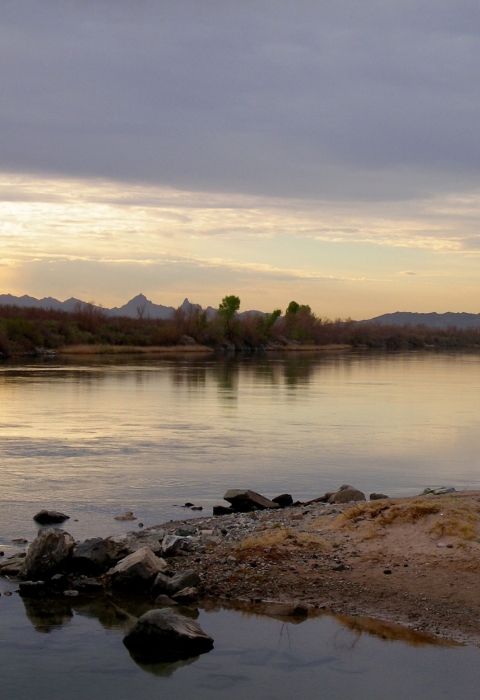Visit Us
National wildlife refuges offer us all a chance to unplug from the stresses of daily life and reconnect with our natural surroundings. At Havasu National Wildlife Refuge, you will enjoy several wildlife-related activities like fishing, canoeing and kayaking, wildlife observation and more!
Location and Contact Information
About Us
A great river in a dry, hot land attracts wildlife and people like a powerful magnet. Today, thousands of visitors annually flock to the refuge to boat through the spectacular Topock Gorge, to fish in Topock Marsh, or to hike in the Havasu Wilderness Area.
Tours
Havasu Refuge offers guided tours once a month on the second Tuesday of the month from October to April from 8 to 10 am. The tours begin at the North Dike parking lot and follow the dike road through restored marsh, cottonwood/willow and mesquite habitat. Guests will learn about the plants and animals that call the refuge home and get a sneak peek on some of the refuge efforts to conserve this precious resource.
What We Do
The National Wildlife Refuge System is a series of lands and waters owned and managed by the U.S. Fish and Wildlife Service. Wildlife conservation is at the heart of the refuge system. It drives everything we do from the purpose a refuge is established, to the recreational activities offered there, to the resource management tools we use. Selecting the right tools helps us ensure the survival of local plants and animals and helps fulfill the purpose of the refuge.
Our Species
Havasu National Wildlife Refuge is a birding hotspot with 318 bird species relying on the diverse habitat. Coyotes, foxes, and bobcats cross the roads searching for rabbits and mice. Desert bighorn leap nimbly from steep rock faces along one of the last remaining natural stretches of the river, the 20-mile Topock Gorge. Elusive mountain lions roam and thousands of bats emerge from historic mines in the 17,600 acre Wilderness Area.
